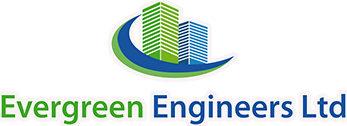Embarking on the journey of home ownership is an exciting venture, but it comes with its own set of challenges, one of which is navigating the home inspection process. In this comprehensive guide, we will unveil the hidden factors of home inspection, shedding light on essential aspects that can impact your investment. By understanding these factors and implementing strategic measures, you can potentially save your hard-earned money and make informed decisions when buying or selling a home.
Structural Integrity: The Backbone of Home Inspection
The structural integrity of a home is paramount. A thorough inspection should assess the foundation, walls, roof, and overall structural stability. Unseen issues, such as hidden water damage or compromised foundations, can lead to costly repairs down the line. Investing in a comprehensive inspection by a qualified professional ensures that these hidden factors are uncovered, allowing you to address concerns before they escalate.
Electrical Systems: A Closer Look Behind the Outlets
Beyond visible wiring and outlets, a home’s electrical systems require careful examination. Outdated wiring, overloaded circuits, or faulty electrical panels can pose safety hazards and result in costly upgrades. A meticulous inspection will identify potential risks, allowing you to negotiate repairs or adjustments to ensure your home meets safety standards.
Plumbing: Beneath the Surface Issues
Plumbing problems are often concealed behind walls or beneath the ground. Issues such as hidden leaks, corroded pipes, or inadequate water pressure may not be immediately evident but can lead to significant expenses. A comprehensive plumbing inspection can uncover these hidden factors, providing you with a clearer picture of the property’s overall condition.
Hidden Water Damage: The Silent Menace
Water damage is a silent menace that can wreak havoc on a home. From mold growth to compromised structural integrity, hidden water damage poses serious risks. A detailed inspection should include a search for water stains, musty odors, or signs of previous leaks. Identifying and addressing these issues promptly can save you from extensive restoration costs.
HVAC Systems: Beyond the Temperature Control
Heating, ventilation, and air conditioning (HVAC) systems are critical for comfort and energy efficiency. An inspection should go beyond simply testing if these systems are functional. Assessing their age, efficiency, and potential hidden issues ensures you’re aware of any impending replacements or repairs, allowing you to budget accordingly.
Environmental Factors: Mold, Radon, and Asbestos
Environmental factors like mold, radon, and asbestos can be hidden threats to a home’s inhabitants. Specialized inspections are often necessary to identify these issues. Discovering and addressing these hidden factors not only contributes to the well-being of the occupants but also prevents the need for costly remediation in the future.
Roof Health: Protection from Above
A sturdy roof is a fundamental aspect of a home’s protection. While visible damage may be obvious, an in-depth inspection should also focus on less apparent issues such as aging shingles, hidden leaks, or structural concerns. Addressing these factors early can prevent water intrusion and extensive damage to the home’s interior.
Insect Infestations: The Unseen Invaders
Insect infestations, from termites to carpenter ants, can compromise a home’s structural integrity. A thorough inspection should include an assessment for signs of pest activity, even if not immediately visible. Early detection allows for targeted interventions, preventing costly damage and preserving the long-term value of the property.
Money-Saving Strategies During and After Inspection
Negotiate Repairs or Price Reduction
Armed with the findings of a comprehensive inspection, negotiate with the seller for necessary repairs or a reduction in the sale price. This ensures that you’re not shouldering the financial burden of addressing hidden issues after the purchase.
Prioritize Essential Repairs
Not all issues uncovered during an inspection are equally critical. Prioritize essential repairs that directly impact safety and structural integrity. This strategic approach allows you to address immediate concerns while planning for less urgent repairs over time.
Obtain Multiple Quotes for Repairs
For repairs identified during the inspection, seek multiple quotes from reputable contractors. This not only ensures a fair cost but also allows you to make informed decisions about which professionals to hire for the job.
Consider a Home Warranty
Depending on the age and condition of the home, consider purchasing a home warranty. This can provide financial protection against unexpected repairs, offering peace of mind and potential cost savings in the long run.
In the intricate process of buying or selling a home, understanding the hidden factors of home inspection is paramount. By delving into the structural, electrical, plumbing, and environmental aspects, among others, you empower yourself to make informed decisions and potentially save substantial amounts of money. A thorough inspection, coupled with strategic negotiation and prioritized repairs, ensures that your investment stands on a solid foundation, free from unseen threats and unexpected expenses.
For more information you can contact us or call us at 07500242494 / 020 3129 5156.

